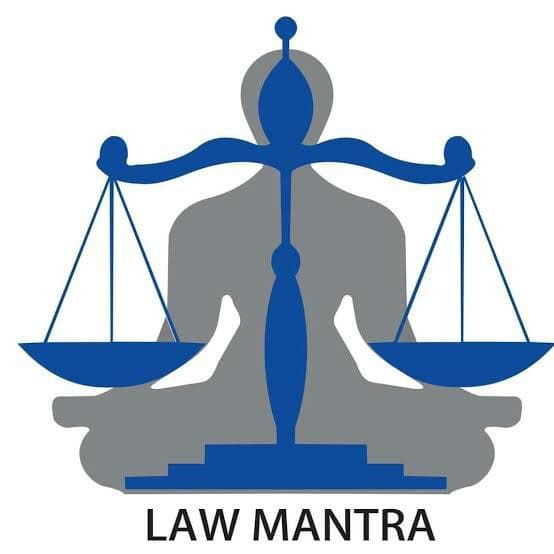When there are two different but conflicting meaning of two different laws, then the courts try to make a harmonious meaning( so that both the laws can be implemented).
Though Fundamental Rights and Directive Principles of State Policy have been two different sides of a coin, but they have certain distinctive features involved in their basic nature and that is why they have been stated in two different parts of the Indian Constitution. Both DPSP’s and Fundamental rights are co-extensive in nature to each other. They have to be worked together as pedals of a cycle to keep the tyres moving in one direction.
The working of both these DPSP’s and Fundamental Rights involved many conflicts in itself but later the need of both PART 3 and PART 4 to be in one single direction was demanded for the nation to be in a peace environment. Thereby, the rule of HARMONIOUS CONSTRUCTION was involved for the effective working of two conflicting laws on one subject or the mechanism of DPSP’s and Fundamental Rights.
For e.g.: Madhu was asked to finish the cleaning of utensils and then she could leave by 12 for her home. This means the interpretation would be that madhu could leave by 12, but she needed to clean the utensils before that.
It is basically a way of interpretation of statutes in a harmonious manner. If for a subject-matter there are two poles apart laws then the court would infer it in a harmonious manner so that no conflict or dispute arises and the matter could be solved upon simply.
Courts must also keep in mind that interpretation that reduces one proviso to a useless number or a dead lumbar is not harmonious construction. To harmonize is not to wipe out any statutory provision.
Salmond describes interpretation as “the process which the courts seek to ascertain the meaning of the legislature through the medium of authoritative forms in which it is expressed”.
As per Kelly:
“Constitutional provisions should not be construed in isolation from all other parts of the Constitution, but should be construed as to harmonize with those other parts.”
This rule is illustrated in the case of Raj Krishna V. Binod AIR 1954. In this case, two provisions of Representation of People Act, 1951, which were in clear conflict, were brought into view. Section 33 (2) says that a Government Servant can nominate or select a person in election but Section 123(8) says that a Government Servant cannot assist any candidate in election except by casting his vote. The Supreme Court observed that both these provisions should be harmoniously interpreted and held that a Government Servant was entitled to nominate or select a candidate seeking election in State Legislative assembly. This harmony can only be achieved if Section 123(8) is interpreted as giving the govt. servant the right to vote as well as to nominate or select a candidate and forbidding him to assist the candidate it any other manner.
The Supreme Court laid down five principles of rule of Harmonious Construction in the landmark case of CIT v Hindustan Bulk Carriers:
1. The courts must avoid a head on clash of seemingly contradicting provisions and they must construe the contradictory provisions so as to harmonize them.
2. The provision of one section cannot be used to defeat the provision contained in another unless the court, despite all its effort, is unable to find a way to reconcile their differences. When it is impossible to completely reconcile the differences in contradictory provisions, the courts must interpret them in such as way so that effect is given to both the provisions as much as possible.
3. Courts must also keep in mind that interpretation that reduces one provision to a useless number or dead is not harmonious construction.
To harmonise the Doctrine of Harmonious Construction as a new technique of interpretation in this field was introduced in Hanif Quareshi Mohd. v. State of Bihar, where the court invalidated a ban on the slaughter of all cattle, on the view that it constituted an unreasonable restriction on the right to carry on a butcher’s business, as guaranteed by Article 19(1)(g), notwithstanding the Directive Principle under Article 41. However it was declared that the Constitution has to be interpreted harmoniously, and the Directive principles must be implemented, but it must not be done in such a way that its laws takes away or abridge the fundamental rights.
Various case laws have been settled by using this particular rule of interpretation-
UNNIKRISHNAN vs. STATE OF ANDHRA PRADESH
COMMISSIONER OF SALES TAX,M.P vs. RADHA KRISHNA
JAGDISH SINGH vs. LT.GOVERNOR DELHI AND OTHERS
11 MARCH, 2007
As per this doctrine the courts have to try to avoid conflicts between the provisions of the statutes. Thus the provisions must be so interpreted that the conflict between the two is avoided and each of them is given effect and, for that purpose the scope and meaning of one may be restricted so as to give meaning to the other also.
Therefore this rule of interpretation is considered very essential for the development and peace maintenance of the nation as it serves in a very high manner to the people from avoiding any of the conflicts or disputes which would lead to devastation of the harmony, by settling the low different laws on one subject by harmonising them into one direction .
BY: DEVIKA SHARMA
